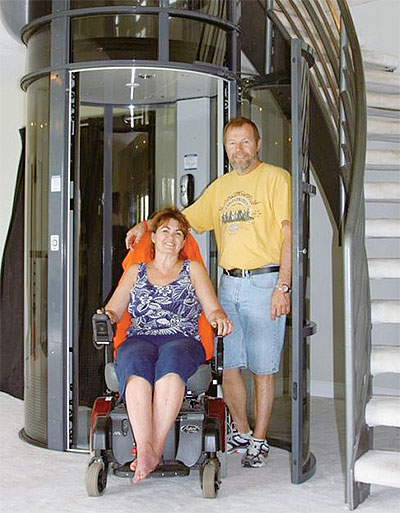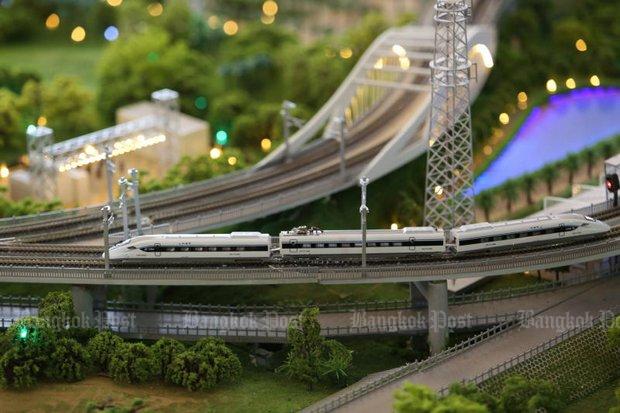Lifts for Living
Vacuum elevators for the home cater to the ups and downs of the wealthy.
Home elevators have become more popular among the wealthy, who use them to accommodate their aged parents, as well as themselves when they grow older. But they can be difficult to install in existing houses or a two- or three-storey condominium units due to space limitations.
 The Florida-based firm Pneumatic Vacuum Elevators (PVE) invented a vacuum elevator in 1990 that is ideal for existing homes, with its sleek and compact design. Pit excavation and hoistway installation are not required, as air pressure above and beneath the elevator cab are the key to transport.
The Florida-based firm Pneumatic Vacuum Elevators (PVE) invented a vacuum elevator in 1990 that is ideal for existing homes, with its sleek and compact design. Pit excavation and hoistway installation are not required, as air pressure above and beneath the elevator cab are the key to transport.
It is like a bubble that can carry people without cables, pulleys or pistons, a self-supporting vacuum elevator with a light and resistant structure made from aluminium and polycarbonates.
Taking advantage of simple principles of physics – the difference in air pressure above and beneath the vacuum elevator cab moves the passengers – vacuum pumps or turbines pull passengers up to the next floor, while the slow release of air pressure floats them gently back down.
“Just imagine a syringe. Vacuum elevators are like that,” says Supoch Chutipattana, managing director of Tmat 4 Ins Co,
The reliability and safety of vacuum elevators are unsurpassed due to the physics behind the design: it is virtually impossible to get stuck between floors or to freefall.
“It cannot fall but will automatically return to the bottom floor during a power outage,” he said.
The upper chamber has a gauge that instantly detects sudden depressurisation. In such an unlikely event, the elevator brakes after descending only two inches.
If a sudden power outage occurs while the vacuum elevator is in use, the elevator cab automatically descends to the ground floor at a slower than normal speed, as there will be no air in the upper chamber.
It is also energy efficient. Energy consumption is zero during descents and low when ascending using the 220-volt turbines. The vacuum elevators are 37 inches in diameter and can be placed virtually anywhere with a 360-degree panoramic view.
Only 75 square centimetres are needed for installation, making them suitable for homes with limited space. There is no excavation, hatch or machine room, and they are very convenient for homes with circulating stairs.
 “Vacuum elevators are easier to install, maintain and operate than traditional elevators. Installation takes only two days, can be relocated if needed and is also do-it-yourself,” said Mr Supoch.
“Vacuum elevators are easier to install, maintain and operate than traditional elevators. Installation takes only two days, can be relocated if needed and is also do-it-yourself,” said Mr Supoch.
He said the price of an imported vacuum elevator with two stops is two million baht for the two-passenger size and 2.5 million baht for three passengers. Prices for three stops are 2.5 and three million baht, respectively. They can also accommodate wheelchairs.
That is higher than the price of traditional elevators that cost only 1.75 million baht, but maintenance costs are very low, said Mr Supoch.
Traditional elevators cost 40,000 baht a year to maintain, while vacuum elevator require only a change of seal priced about 30,000 baht every 15,000 rides or four years. However, in a tropical country like
The company is in talks with PVE to import only the pump box, with the main body manufactured locally. That would help cut the retail price in half as polycarbonates and aluminium, used for the main part of the body, are available in
PVE can make 50-70 units a month and has to date produced 7,000 units for use worldwide.
Currently, Tmat 4 Ins has its first order for three units from a customer in Nong Khai province and expects a total of five from
The local distributor is targeting sales of 50 units next year.
Rachkrit Tavorndhanitkula, the managing director of elevator producer A.D. Hero Schneider (
During the first seven months of this year, the company sold only 20 units and expects vacuum elevators will replace traditional ones due to their convenient installation, lower maintenance and reduced maintenance costs.
Source: http://www.bangkokpost.com

